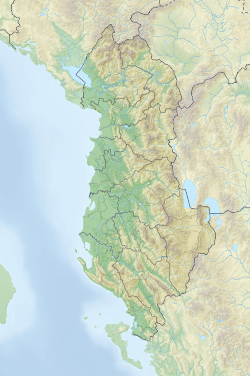| Fier Mosque | |
|---|---|
Xhamia e Fierit | |
 The reconstructed mosque, in 2008 | |
| Religion | |
| Affiliation | Islam |
| Ecclesiastical or organisational status | Mosque |
| Status | Active |
| Location | |
| Location | Fier, Fier County |
| Country | Albania |
Location of the mosque in Albania | |
 | |
| Geographic coordinates | 40°43′34″N19°33′26″E / 40.7261°N 19.5573°E |
| Architecture | |
| Type | Islamic architecture |
| Style | Ottoman |
| Completed | 2005 (rebuilt) |
| Specifications | |
| Dome(s) | 1 |
| Minaret(s) | 2 |
The Fier Mosque, officially the Mosque of Fier (Albanian : Xhamia e Fierit), is a mosque located in the town of Fier, in Fier County, Albania.
Contents
Destroyed alongside other houses of worship during the Communist rule of Enver Hoxha, the mosque was rebuilt in 2005, [1] in the Ottoman architectural style. It is one of the largest mosques in Albania and is a local visitors' attraction.
An Ottoman-era mosque is also located in another part of the town of Fier.
